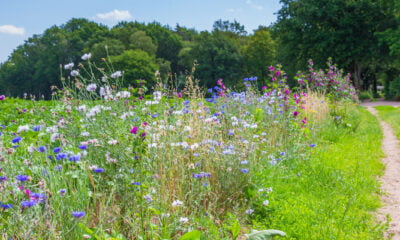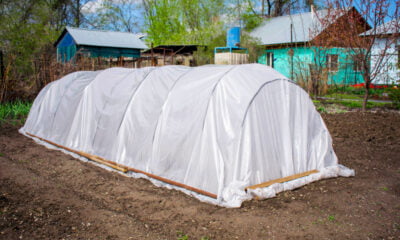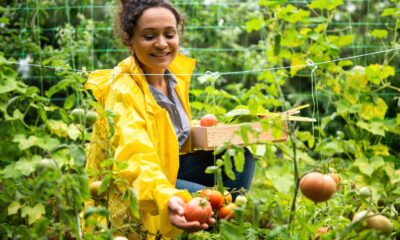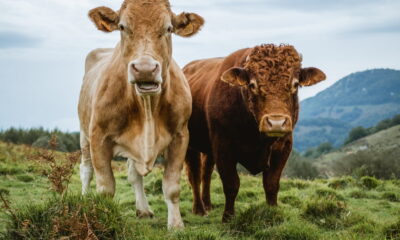

Sustainability
Massive Technological Advances Create a New Era for Sustainable Farming
The use of new technology in agriculture offers many benefits to farmers all over the world. Among these benefits are an increase in yields and cost-saving on fertilizers and pesticides.
We have talked about the environmental consequences of farming in the past. Sustainable farmers are looking for new ways to reduce their environmental footprint.
Innovations in farming have long been not just a luxury, but a vital necessity. The usual methods of agricultural intensification (the application of chemicals, purchase of more modern and powerful equipment) no longer gives the desired effect. Besides, production costs are constantly growing, which ultimately leads to a decrease in business profitability. So, let’s look into modern ways that can help achieve greater efficiency.
These developments are going to be important, as farmers need to reduce their carbon footprint. The EPA estimates that the farming sector accounts for over 9% of all carbon emissions in the United States, which is not sustainable.
There are a lot of things that farmers can do to be eco-friendlier. This includes investing in sustainable agriculture technology.
Efficient Farming
One of the most popular smart farming techniques is precision farming. To put it simply, precision farming is about monitoring the state of soil and crops based on the data collected remotely. In fact, any field can be divided into segments and analyzed to determine land cultivation time, sowing time, and irrigation, fertilizers, and pesticides needs. What’s all this for? To increase yields and reduce the consumption of fuel, seeds, and chemicals. And all that can be done via field monitoring.
Schneider Electric listed this as one of the steps that farmers need to take to lower their carbon footprint. This can be a good trend.
Field monitoring is needed to obtain the most relevant information about soil condition and plants health with minimum effort. With its help, the level of germination, the degree of infection with diseases and weeds is determined. Based on this data, farmers can make reliable informed decisions on soil treatment, fertilization, and pest control measures.
Traditionally, field monitoring has been a time-consuming process, especially in large areas. One of the most important tasks on the agronomist’s list is daily crop inspection. While the seedlings are still young, it is relatively easy to inspect them personally. However, some crops can grow up to 2 meters in height, which significantly complicates movement deeper within the field. These practices can even work with small farms.
Luckily, innovation in farming equipment has led to the use of satellites or drones for large fields monitoring. With the help of this technology, farmers can get the most accurate data online in just a couple of clicks. This can be done via an online platform, like EOS Data Analytics, that provides efficient tools for searching, processing, and analyzing large amounts of satellite data.
Big Data for Big Fields
The article by Fast Company is one more proof that technology development in the world of farming shows no signs of stopping. And as the number of sensors and equipment in the field keeps growing, modern agriculture becomes more and more associated with big data, which allows for achieving the following optimizations:
- Collecting data on soil and air moisture to calculate the most effective irrigation time and method
- Controlling seeds, fertilizers, water and fuel consumption
- Calculating the best routes for combines and tractors to save fuel
- Yield and profit planning for the year
That is especially convenient when it comes to big fields that are much harder to inspect without the help of modern technology. That is because the larger the area, the more people, time, and money are needed. To monitor large areas much easier, it’s best to use a digital management tool. EOS Crop Monitoring is just the right tool for the job. Among its many capabilities, the app offers a field zoning feature. Essentially, it is a way of identifying zones within a field to prescribe variable rate application (VRA) of seeds during planting and fertilizers.
Field Zoning
Zoning’s main goal is to increase the efficiency of seed and fertilizer application, according to the needs of every individual plot within the field, minimizing waste. Farmers can create VRA prescription maps, download them as shp. Zip file, and upload these maps into machinery on-board computers. In other words, zoning makes possible an automated differential application of seeds and fertilizers.
Besides, zoning optimizes soil testing for identifying productivity level variation across the field. Farmers can significantly reduce costs by needing less soil samples to analyze.
How it works
The field’s satellite images provide data that is analyzed with the help of vegetation indices to determine the state of crops based on biomass density, chlorophyll content, and other factors. Vegetation maps divide the field in a specified number of zones for optimal differential nitrogen application, while productivity maps show which zones require more phosphorus or potassium. With productivity maps, you can clearly see where in the field you should plant more seeds, and where less or none. Vegetation maps may reveal areas within the field where nitrogen levels are already so high, they require little to no additional fertilizing. This is a win-win situation for both business and ecology, since zoning can help avoid the harmful surplus of nitrogen in the soil.
Once VRA prescription maps are created, they are ready to be uploaded directly to agricultural machinery. Farmers decide on the actual planting and fertilizing rates but the application is carried out automatically, saving farmers time.
This goes to show that modern innovations in agriculture bring a variety of opportunities for farmers. They can now monitor the state of crops in different ways online via an IoT device. And currently, the most useful monitoring tools are satellites and drones, offering already analyzed field data. Manual examination is gradually becoming a thing of the past due to its ineffectiveness in large areas, especially at later stages of plant development. Overall, those who do not shun progress but make the use of it enjoy higher field productivity and lower production costs.
Technological Breakthroughs Are Driving Positive Changes in Agriculture
The agricultural industry is changing in response to new technology. Farmers need to appreciate the changes that technology is bringing in order to develop sound farming practices.
































